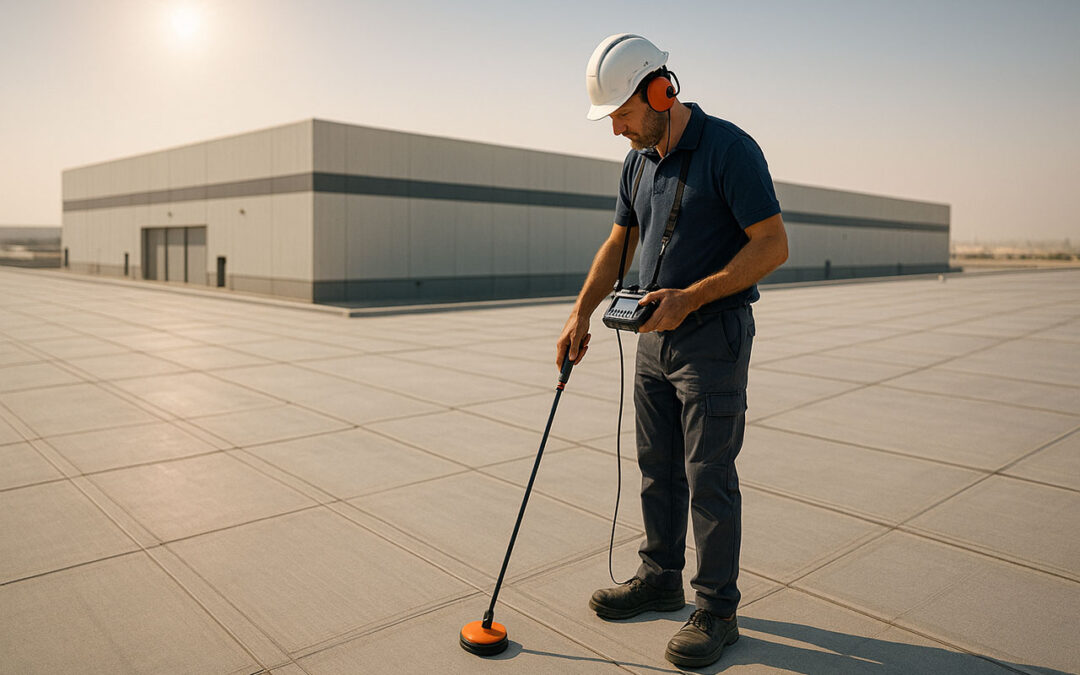When a commercial leak shows up on your radar, the clock starts ticking. Whether it’s a slow drip behind the walls or a full-on pipe burst beneath the floor, leaks in commercial buildings can become costly fast. But when you start calling for quotes, you’ll probably notice something: prices are all over the place.
Why? Because commercial leak detection isn’t a one-size-fits-all service. It depends on a lot of moving parts. Let’s break them down so you know what to expect.
1. Size of the Property
The larger the space, the more ground a technician has to cover. A small café and a five-floor office block will not have the same inspection time or complexity.
-
More rooms = more potential problem spots
-
Bigger pipe networks take longer to assess
If the building includes underground parking, roof tanks, or an industrial floor layout, expect the cost to increase accordingly.
2. Type of Leak
Not all leaks are created equal. Is it a freshwater pipe? A waste line? A gas leak?
-
Water leaks are often easier to track with moisture tools or thermal cameras
-
Gas leaks may require highly specialised gear and immediate safety precautions
-
Sewer leaks might need CCTV inspections and deep access
The type of liquid (or gas) involved has a direct impact on both detection and repair complexity.
3. Location of the Leak
A leak behind plasterboard is easier to deal with than one buried under concrete. If it’s:
-
Behind walls
-
Under tiled flooring
…the process will take longer, and the cost of accessing the leak will go up.
4. Detection Technology Used
Modern commercial leak detection doesn’t rely on guesswork. Engineers might use:
-
Acoustic leak detectors
-
Thermal imaging cameras
-
Tracer gas systems
-
Pressure testing equipment
The more advanced the tech (and the more tools used), the higher the fee – but the better the accuracy.
5. Extent of the Damage
A small weep in a joint and a pipe that’s been spraying into the subfloor for weeks are two very different jobs.
-
Bigger leaks = more water damage
-
More damage = higher restoration costs
The leak might just be the tip of the iceberg. Damage to flooring, drywall, or equipment adds to your total bill.
6. Age and Condition of the Plumbing System
Outdated systems mean:
-
Harder access
-
Brittle pipework
-
Risk of extra leaks during repair
Many commercial buildings in older parts of town have mixed material plumbing – copper, galvanised steel, plastic – and that can complicate both detection and repair.
7. Accessibility Challenges
If the suspected leak is in a:
-
Crawl space
-
Void above a suspended ceiling
-
Service duct
…expect the labour time (and cost) to rise. Special equipment like ladders, lifts, or confined-space gear may be needed.
8. Urgency and Response Time
Need help out of hours? You’ll pay a premium. Emergency call-outs during evenings, weekends, or holidays always cost more.
-
Same-day service is pricier
-
Planned maintenance rates are lower
If you can schedule the work, you’ll usually save money.
9. Compliance and Reporting Requirements
If your building is in a regulated industry – think hospitals, schools, food processing plants – there may be strict documentation rules.
-
Pre-approval paperwork
-
On-site safety protocols
-
Detailed reports for insurers or auditors
This extra admin time is often reflected in your invoice.
10. Repair Method Required
Once the leak is found, how it’s fixed affects the final cost.
-
Traditional digging or cutting into walls adds mess and labour
-
Trenchless or non-invasive methods like relining or patching are quicker but may need specialist contractors
-
Some repairs are same-day, others require follow-up work
Always ask whether the quote includes full repair or just detection.
Conclusion
No two commercial properties are the same, and neither are their leaks. When it comes to commercial leak detection, the cost depends on everything from the building layout to the type of technology used. A qualified expert will assess your site and explain what’s needed – which is the only way to get a clear, accurate quote.
Delaying detection can mean bigger problems (and bills) later. If in doubt, get it checked.
FAQs
How much does commercial leak detection usually cost?
It depends on your property size, type of leak, and access. Most jobs start from a few hundred pounds, but large-scale sites can run into the thousands.
Are non-invasive methods reliable?
Yes. Modern tools like acoustic sensors and thermal imaging offer accurate results with no damage – ideal for commercial buildings.
Can I just get a plumber to check for leaks?
Standard plumbers might spot obvious leaks, but specialists have the right gear to locate hidden or underground issues accurately.
Is insurance likely to cover detection and repair?
Some policies cover water damage, but not the detection process. Check the fine print or speak to your provider.
What happens if I delay leak repairs?
Leaks get worse. Water damage, mould growth, and even structural issues can result – costing far more in the long run.





